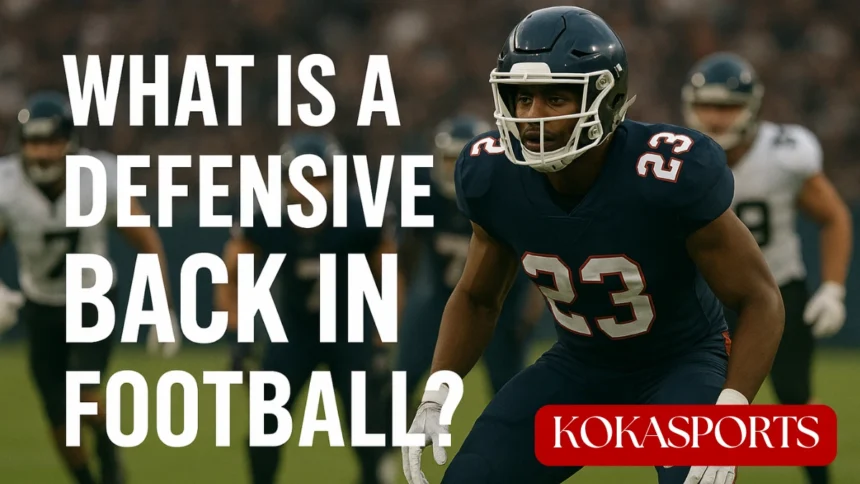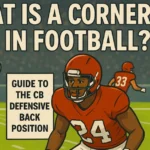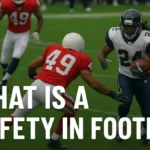If you’ve ever watched a football game and wondered what is a defensive back in football, you’re not alone. The defensive back is one of the most important position groups in American football, yet many fans don’t fully understand what these players do. In this guide, we’ll break down everything you need to know about the defensive back position, from basic definitions to advanced strategies.
What is a Defensive Back Do in American Football?
A defensive back is a defensive player who lines up in the secondary, which is the area behind the defensive line and linebackers. The defensive back’s job is to stop the passing game and provide support against run plays. These players are the last line of defense between the offense and the end zone.
The defensive back position requires players who can run fast, think quickly, and make split-second decisions. Unlike a defensive lineman or linebacker who usually play closer to the line of scrimmage, defensive backs must cover large areas of the field and react to what the quarterback and wide receiver are doing.
Here are the main jobs of a defensive back:
- Cover wide receivers and tight ends in pass plays
- Tackle running backs who break through the defensive line
- Intercept passes thrown by the quarterback
- Communicate with other players on the defensive side of the ball
- Support against the run game when needed
The position on defence requires high football IQ, great ball skills, and excellent speed. A football coach will tell you that great defensive backs can change the outcome of any game.
Read More: What is a Cornerback in Football?Guide to the CB Defensive Back Position
Types of Defensive Backs: Understanding Each Position
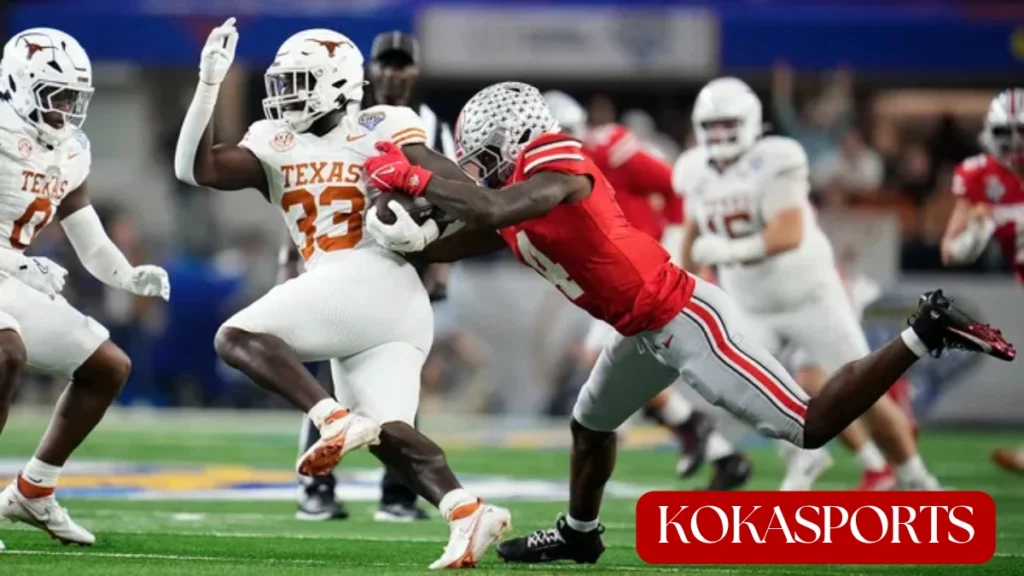
Not all defensive backs are the same. There are different types of defensive backs, each with specific roles and responsibilities. Let’s look at the main types of defensive backs you’ll see on the field.
Cornerback – The Primary Pass Defenders
The cornerback is usually the fastest defensive back on the field. These players line up across from wide receivers and their main job is to prevent completions on pass plays. A cornerback typically plays back from the line of scrimmage, giving them space to react to routes.
Key Cornerback Responsibilities:
- Cover wide receivers in man-to-man coverage
- Disrupt passing routes at the line
- Make tackles on running and passing plays
- Provide help in run support when needed
The difference between a defensive back and a cornerback is that cornerback is a specific type of defensive back. All cornerbacks are defensive backs, but not all defensive backs are cornerbacks.
Safety – The Last Line of Defense
Safety is a defensive back position that comes in two main types: free safeties and strong safeties. The safety needs to be smart, fast, and able to cover a lot of ground quickly.
Free Safety:
- Lines up deepest in the defensive backfield
- Provides help over the top on pass plays
- Often called the “centerfielder” of football
- Must have excellent ball skills for interceptions
Strong Safety:
- Usually plays closer to the line of scrimmage
- Helps cover tight ends and slot receivers
- Provides more run support than free safeties
- Often bigger and stronger than other defensive backs
Nickel and Dime Defensive Backs
Modern football uses extra defensive backs in special situations. When a team puts five defensive backs on the field, the 5th defensive back is called the “nickel” back. When they use 6 defensive backs, it’s called a “dime” package.
These extra defensive backs help teams defend against offenses that use multiple wide receivers. The nickel back often covers slot receivers who line up between the outside receivers and the tight end.
Essential Skills Every Defensive Back Must Have
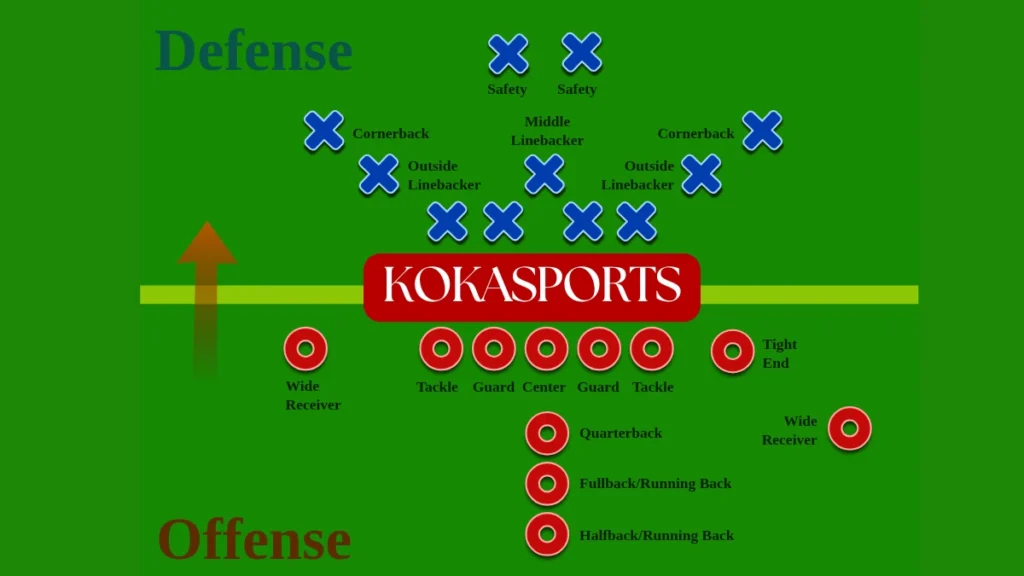
Playing defensive back requires a unique combination of physical and mental skills. Let’s break down what makes the best defensive backs successful.
Physical Requirements
| Skill | Why It Matters | How It’s Used |
|---|---|---|
| Speed | Must keep up with fast wide receivers | Covering deep routes and long passes |
| Agility | Need to change direction quickly | Reacting to route cuts and breaks |
| Strength | Required for tackling and press coverage | Stopping running backs and big receivers |
| Jumping Ability | Helps reach high passes | Competing for balls in the air |
| Hand-Eye Coordination | Essential for ball skills | Making interceptions and pass breakups |
Mental Skills
The defensive back position is one of the smartest positions in football. Players must:
- Read the quarterback’s eyes to predict where the ball is going
- Recognize offensive formations before the play starts
- Communicate with linebackers and defensive linemen
- Remember coverage assignments for different plays
- Make quick decisions in high-pressure situations
A defensive coordinator once said, “The best defensive backs are like chess players. They’re always thinking three moves ahead.”
How Defensive Backs Fit Into Different Defensive Formations
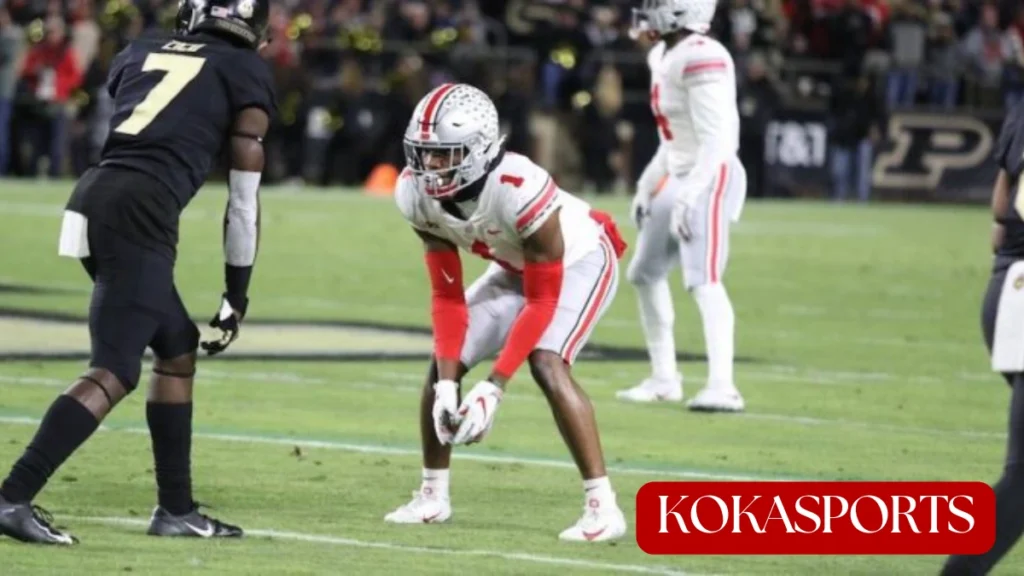
Understanding how defensive backs work within the larger defensive formation helps explain their importance. Most defensive formations use different numbers of defensive backs depending on the situation.
Base Defense (4 Defensive Backs)
In a basic defensive formation, teams usually have:
- 2 cornerbacks covering the outside receivers
- 1 free safety providing deep help
- 1 strong safety supporting against run and pass
This gives you four defensive backs working with the defensive line and linebackers to stop the offense.
Nickel Defense (5 Defensive Backs)
When offenses use three or more wide receivers, defenses often respond with five defensive backs. This means taking out a linebacker and adding an extra defensive back to match the receivers.
Dime Defense (6 Defensive Backs)
In obvious passing situations, some teams will use six defensive backs on the field. This gives maximum coverage but makes the defense weaker against run plays.
The number of defensive backs on the field changes based on what the offense is trying to do. A smart defensive coordinator will adjust the defensive back grouping to match the offensive play.
Training and Development for Defensive Backs
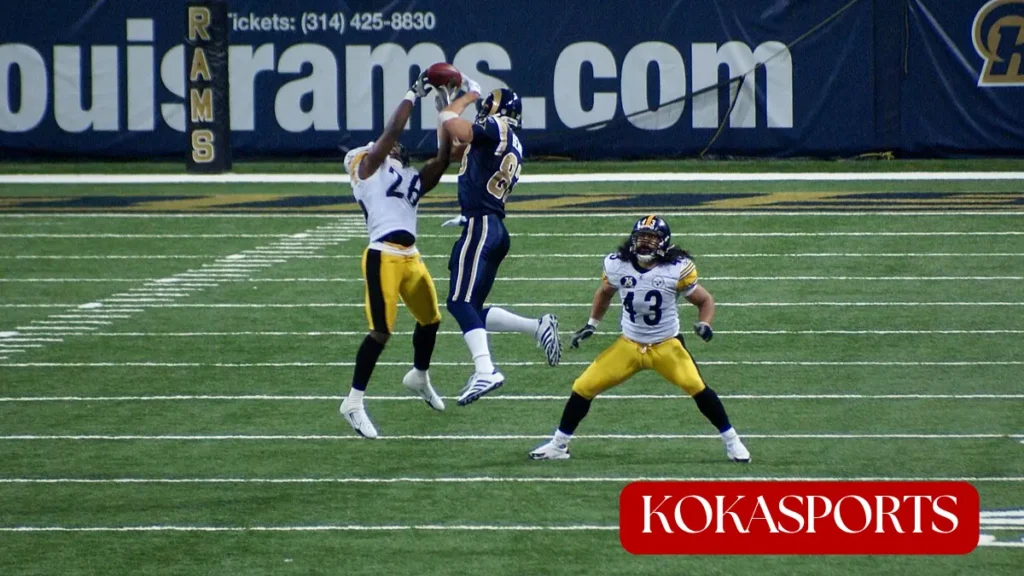
Learning how to play defensive back takes time and practice. Whether you’re interested in high school football or just want to learn about football better, understanding how players develop these skills is important.
Essential Drills for Defensive Backs
Backpedal Drills:
- Help players move backward while watching the quarterback
- Improve balance and foot speed
- Essential for maintaining proper coverage depth
Ball Skills Training:
- Catching drills to improve hands
- Reaction drills for interceptions
- Hand fighting techniques against receivers
Coverage Drills:
- Man-to-man coverage practice
- Zone coverage responsibilities
- Communication drills with other defensive backs
From High School to College Football
The path from high school football to college football requires dedication and skill development. Young players must:
- Master basic techniques like proper stance and footwork
- Develop football IQ through film study and practice
- Build physical strength and speed through training
- Learn multiple positions within the defensive backfield
- Show leadership and communication skills
College football scouts look for defensive backs who can play multiple positions and adapt to different offensive schemes.
Best Defensive Backs Of All Time
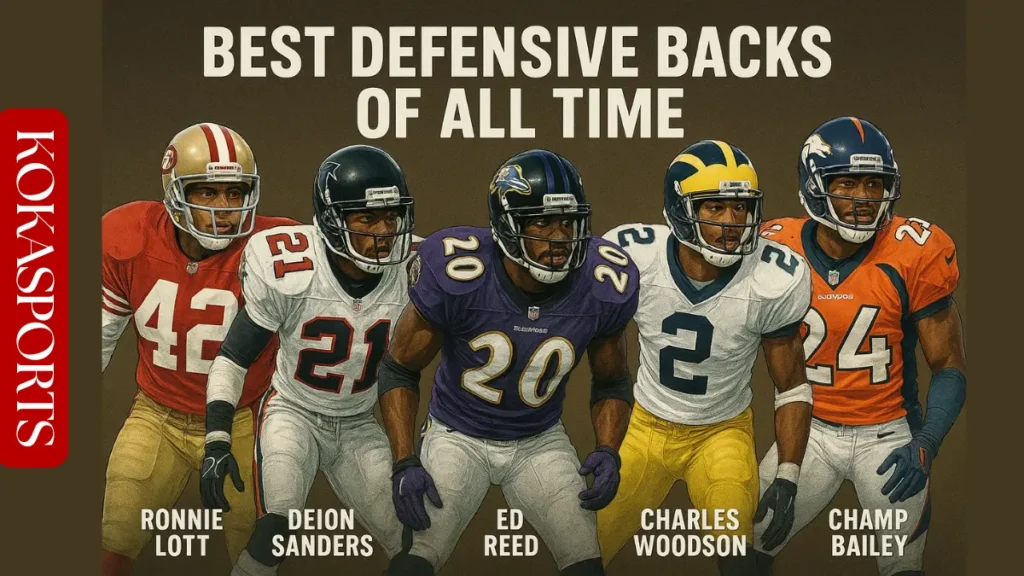
The National Football League has seen many great defensive backs who changed how the position is played. These players show what makes the best defensive backs special.
- Ronnie Lott – The most complete defensive back in NFL history, dominated as both safety and cornerback
- Deion Sanders – “Prime Time” was the fastest shutdown cornerback who changed how teams threw the ball
- Ed Reed – Master of ball skills with 64 career interceptions and incredible range as a safety
- Charles Woodson – Won the Heisman Trophy as a defensive back and recorded 71 career interceptions
- Champ Bailey – Consistent shutdown cornerback for over a decade with elite coverage skills
Common Questions About Defensive Backs
How Many Defensive Backs Are Usually on the Field?
Most teams use four defensive backs in their base defense. However, this number can change based on the situation:
- Goal line situations: Might use only 2-3 defensive backs
- Passing situations: Could use 5-6 defensive backs
- Special formations: Sometimes use even eight defensive backs
What is the Difference Between a Safety and Cornerback?
While both are defensive backs, they have different jobs:
Safety:
- Usually bigger and stronger
- Lines up deeper in the backfield
- Provides help over the top
- More involved in run support
Cornerback:
- Usually smaller and faster
- Lines up closer to receivers
- Focuses mainly on pass coverage
- Less involved in run support
Can Players Move Between Defensive Back Positions?
Yes! Many defensive backs play multiple positions. A safety is a defensive back who might also play cornerback in certain packages. This versatility makes players more valuable to their teams.
The Future of Defensive Back Play
Modern offenses are changing how teams use defensive backs. With more teams using multiple wide receivers and running back receiving threats, defensive backs must be more versatile than ever.
Key Trends:
- Bigger defensive backs who can cover tight ends and running backs
- More communication between different defensive back positions
- Hybrid players who can play multiple positions
- Better ball skills training using technology and advanced techniques
The position groups on defense are evolving, and defensive backs are becoming more important in stopping modern offenses.
Why Understanding Defensive Backs Matters
Whether you’re a fan trying to learn about football or a player looking to improve, understanding what defensive backs do helps you appreciate the game better. These players combine athleticism, intelligence, and teamwork to play one of football’s most challenging positions.
The defensive back position in football requires players who can think fast, move faster, and make plays when their team needs them most. From the cornerback covering the fastest wide receiver to the safety providing the last line of defense, defensive backs are essential to any successful defense.
Conslusion
- Defensive backs are the players in the secondary who cover passes and help stop runs
- There are different types of defensive backs: cornerbacks, free safeties, and strong safeties
- The position requires speed, intelligence, and great ball skills
- Teams use different numbers of defensive backs based on the situation
- Great defensive backs can change the outcome of games
Understanding the defensive back’s role helps you better appreciate the strategy and skill involved in American football. Whether you’re watching from the stands or playing on the field, knowing how these players work makes the game more exciting and meaningful.
Next time you watch a game, pay attention to how the defensive backs move, communicate, and react to the offense. You’ll see why this position is so important and why the best defensive backs are some of the most valuable players on the defensive team.
FAQs
What’s the difference between a linebacker and a defensive back?
Linebackers play closer to the line, defensive backs cover receivers in the secondary.
Is defensive back a good position?
Yes, it’s highly valued and offers opportunities for game-changing interceptions.
Is a defensive back the same as a safety?
No, safety is one type of defensive back along with cornerbacks.
What classifies as a defensive back?
Players in the secondary who cover receivers – cornerbacks, safeties, nickel backs.
What’s the hardest position in football?
Quarterback due to mental demands and decision-making pressure.

